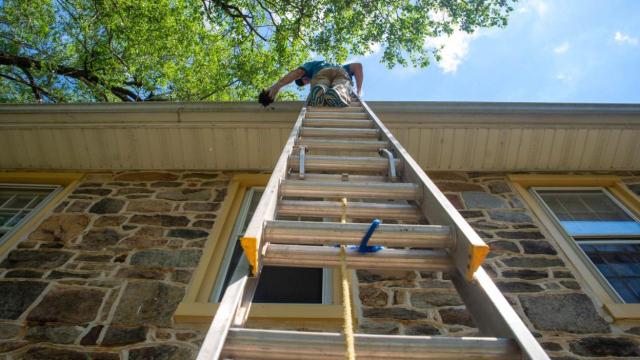Whether you want to handle your own home renovation, or maybe just spruce up a room with a new coat of paint, you’ve probably heard that any project should be approached with a “safety first” mindset, but do you really know how to avoid the leading causes of serious injuries DIYers experience while they’re working on projects?
Here’s a breakdown of the most common ways people hurt themselves while conducting home maintenance or carrying out their own renovations—and how to prevent them.
Good safety practices, explained
In Occupational Safety and Health Administration workplace safety (training known as OSHA 10-30), it’s taught that “hazard elimination” is the best rule of thumb for avoid injury. That is to say, anything dangerous that doesn’t need to be there should be removed, and any potentially dangerous steps you don’t need to take should be avoided.
Although OSHA training is aimed at workplace safety, a lot can be gleaned from this approach, even by the average home improvement DIY enthusiast. The tiered approach progresses as follows:
- Hazard elimination
- Hazard mitigation
- Personal Protective Equipment
The basic line of reasoning is that first and foremost, hazards should be avoided. If they can’t be avoided, they should be mitigated with injury prevention methods. Finally, personal protective equipment should be used at all times, and to serve as a last line of defense. Taken together, these tips constitute the most solid advice anyone considering their own home improvement projects will get about carrying out that work safety. Taking the time to think through possible dangers and plan to eliminate, mitigate, and protect against them will save you from most trips to the emergency room.
Falls
Falls are the second leading cause of accidental death for people in the community, after poisoning and overdoses. While a significant number of these injuries are to adults over the age of 65, of the rest, slippery or obstructed floors are mostly to blame. Keeping your extension cords wrangled and wiping up spills as you go, to avoid creating slippery conditions, can help to prevent many trip and fall injuries in your home shop.
Ladder accidents
An addendum to the earlier item, falls from ladders account for 81% of fall injuries, so ladder safety is of crucial importance. To avoid being injured when using a ladder, the first step is to not get on one unless you absolutely need to. In some cases, using an extension pole or other device might work better than climbing a ladder to complete your task.
If you do need to climb, make a plan to get your tools and materials safely where you need them to be, rather than risking making too many trips up and down the ladder or carrying too much at once; this will reduce your risk of falling immensely. Make sure you’re using a ladder that’s the right size for what you’re doing—i.e., not standing on the top two steps of a ladder, not leaning too far to either side of a ladder, and not setting up an extension ladder with less than a 75 degree angle (or one foot out from the wall for every four feet up your ladder goes). These safety considerations will all help reduce your risk of a fall.
Saws and blades
Injuries from cutting tools like saws and knives result in thousands of emergency room visits every year. Table saws are responsible for a high percentage of these, injuring around 33,000 people annually. Dull knives, dull saws, and unprotected blades are also major contributors to “contact with blade” injuries. If you use a table saw, you might consider investing in a SawStop that, when used correctly, cuts the risk of these injuries to almost zero (yes, I said “cuts). While these machines are pricey, starting at around $3,600, they’re far cheaper than finger reattachment.
As with other causes of injury, good planning and a heavy dose of common sense can also help you mitigate risk of blade injuries. Set up saws on stable work surfaces, use manufacturer provided guards, and sharpen your tools regularly to help reduce your risk of injuring yourself. Also, wearing work gloves and other personal protective equipment while operating tools with blades is a must.
Eye injuries
DIY-related eye injuries are a big cause of visits to the ER. The majority of eye injuries result from falls, so see above regarding ladder and fall safety to avoid them. Other eye injuries connected to DIY projects include getting objects in the eye like splinters, dust, or other debris. This can be mostly avoided by wearing appropriate safety glasses, but sweeping up as you go, using a shop vac to keep dust to a minimum, and choosing tools with guards and bags to mitigate debris are also good ways to reduce your risk.
Burn injuries
While injuries from burns cause only about .4% of hospital visits, that’s still thousands of people a year being treated for mostly preventable injuries. Burns can be caused by accidental fires in the home, and that can include the home shop. Flammable liquids like spray paint, adhesives, and oils should be kept in proper storage containers, and heat sources should always be closely monitored. Also, unexpected chemical reactions like those from oil based stains or cement can cause burns as well. Always dry rags from staining in a well-ventilated area, and never leave them unattended until they’re totally dry. Avoid direct skin contact with uncured cement, using gloves and long sleeves to protect your skin.

Leave a Reply
You must be logged in to post a comment.